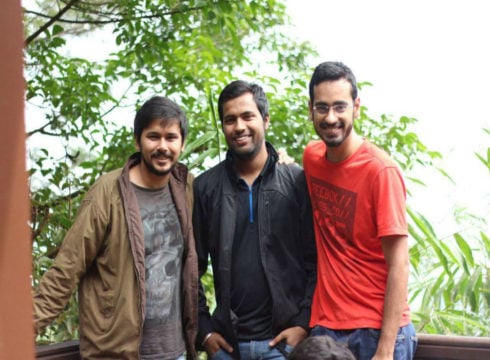SUMMARY
The funding round was led by existing backer Shunwei Capital along with new investors Morningside Ventures of China and Jesmond Holdings
Existing investors including Xiaomi, SAIF Partners and Lightspeed Venture Partners also invested a significant amount
If ShareChat plans to go for a public offering, it will be at a minimum valuation of $2 Bn
Inc42 Daily Brief
Stay Ahead With Daily News & Analysis on India’s Tech & Startup Economy
Bengaluru-based Indian regional language social platform ShareChat has raised close to $100 Mn (INR 720 Cr) in a funding round that will boost its valuation to $460 Mn (INR 3,332 Cr). This is a 7x increase to its last valuation when the company raised $18.2 Mn in Series B funding round from Xiaomi Singapore and its sister company Shunwei Capital at a valuation of $67 Mn (INR 431 Cr) in January 2018.
The documents filed with the Registrar of Companies show that the fresh funding round was led by existing backer Shunwei Capital along with new investors Morningside Ventures of China and Jesmond Holdings, an affiliate of Russian billionaire Yuri Milner’s DST Global.
Existing investors including smartphone maker Xiaomi and venture capital firms SAIF Partners and Lightspeed Venture Partners also invested a significant amount.
The filings further reveal that if ShareChat plans to go for a public offering, it will be at a minimum valuation of $2 Bn, underlining the upside investors are seeking. However, an IPO looks like a distant dream for the company as it plans to strengthen its user base before its begins monetising its services.
ShareChat has seen daily active users increase from 5 Mn in April-May to over 8 Mn now. The company has about 50 employees and covers 14 regional languages.
The company is reportedly looking to go deeper into micro-markets, including the Northeast region before it begins working on monetising its service next year through advertising, influencer marketing, and in-app purchases.
ShareChat Journey So Far: Key Facts
- Founded by IIT-Kanpur alumni, Farid Ahsan, Bhanu Singh and Ankush Sachdeva, in October 2015
- Initially started as a content sharing tool for WhatsApp with users sharing about 100K content pieces per day
- Gradullay evolved into a regional language driven social networking platform.
- It allows users to create, discover and share content with each other much like people do on Tumblr and Instagram.
- Earlier this year, it launched an anonymous chat option, direct messaging, original video content under the banner of ShareChat Talkies etc
- Other recently launched features include:
- “Shake-N-Chat” which connects two users engaging with content from similar genres, over personal chat, at random
- “Private Messaging” designed to encourage one to one communication in Indian languages
- “Open tagging” where users are allowed to create tags and post relevant content under these user-generated tags.
Vernacular Is Where The Money Is In India
The vernacular content market in India is poised for disruption and is witnessing increased levels of activity. In April 2017, Google’s VP for Southeast Asia and India, Rajan Anandan, said that nine out of every 10 new Internet users will be non-English speakers.
Recently, Inc42 reported that Bengaluru-based fledgeling hyperlocal video news platform Lokal raised an undisclosed amount of funding from venture capital firm India Quotient.
In line with this, global players such as Google, Facebook etc have already placed their bets on Indian vernacular languages by enabling different local languages on their platforms and welcoming new users.
For example, Google has been launching India-centric products ranging from Google Home, Home Mini, Neighbourly, Jobs, etc, all of which have in-built vernacular touch-enabled features. The company had identified its user base and it tapping into a 12 Mn user base in the country.
Even on Google Maps, the company has already enabled voice navigation in Hindi, Bengali, Gujarati, Kannada, Telugu, Tamil, and Malayalam.
Google’s friendly, neighbourhood app Neighbourly is a social platform for people to ask and find local information from others in their neighbourhood. The application can recognise English and eight other Indian languages — Marathi, Hindi, English, Gujarati, Kannada, Telugu, Malayalam, Tamil, and Bengali.
Another global player that has recently placed bets on Indian vernacular growth is Quora, which introduced a Hindi platform for its users. Since the launch of its beta version in April, Quora Hindi has already recorded questions and answers on diverse subjects.
Meanwhile, content-based companies such as Inshorts, POPxo, etc, have dived into the vernacular content pool, both starting with Hindi, and have witnessed increasing growth.
Chinese mobile Internet company UCWeb, which enabled Hindi along with English on its mobile browser, had said that the next wave of growth in India’s Internet penetration was expected to come from Tier II and Tier III cities, enabled by the wireless mobile Internet.
The preference of Indian consumers for vernacular and regional language content is on the upswing, with 93% of the time spent on videos in Hindi and other regional languages.
[The development was reported by ET.]
Note: We at Inc42 take our ethics very seriously. More information about it can be found here.


